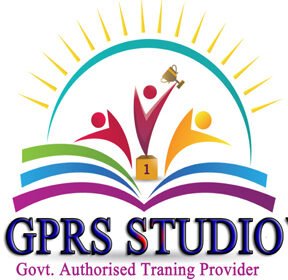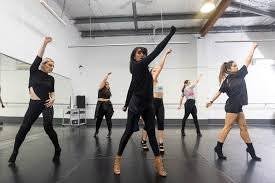Lighting artist ( 6 month course)
Lighting artist click here
Brief Job Description: Individuals at this job need to add light and shadows to the
production in accordance to the established creative style
Personal Attributes: This job requires the individual to have an understanding of
lighting, shadows, exposure, natural light, colour space, reflections etc. The
individual must be able to visualize and light frames digitally using software such
as 3D studio max etc.

Description
Attitude poses Attitude poses are used to describe the body language and personality of
the characters
Budget Budget is an estimate of the total cost of production that may include a
break-up of cost components
Character line-up Character line-up is the portrayal of characters side-by-side
Character turnarounds Character turnarounds are used to depict the characters look from all
angles
Clean-up Refining the interim/rough animation
Color keys Color keys are used to depict the mood of the production through hues
and tones
color theory Color theory is the art of combining all the colors in the color wheel to
create specific color combinations
Core Skills/Generic
Skills
Core Skills or Generic Skills are a group of skills that are key to learning
and working in today’s world. These skills are typically needed in any
work environment. In the context of the OS, these include
communication related skills that are applicable to most job roles.
Creative Brief Creative brief is a document that captures the key questions that serve as
a guide for the production including the vision, objective of the project,
target audience, timelines, budgets, milestones, stakeholders etc.
Description Description gives a short summary of the unit content. This would be
helpful to anyone searching on a database to verify that this is the
appropriate OS they are looking for.
Function Function is an activity necessary for achieving the key purpose of the
sector, occupation, or area of work, which can be carried out by a person
or a group of persons. Functions are identified through functional
analysis and form the basis of OS.
Job role Job role defines a unique set of functions that together form a unique
employment opportunity in an organization.
Knowledge and Understanding
Knowledge and Understanding are statements which together specify the
technical, generic, professional and organizational specific knowledge that
an individual needs in order to perform to the required standard.
Lighting keys Lighting keys are used to depict the mood of the production through
intensity, tine and shadows
Mouth chart Mouth chart is used to portray the emotions and expressions of the
characters
National Occupational
Standards (NOS)
NOS are Occupational Standards which apply uniquely in the Indian
context.
Occupation Occupation is a set of job roles, which perform similar/related set of
functions in an industry
Occupational Standards
(OS)
OS specify the standards of performance an individual must achieve
when carrying out a function in the workplace, together with the
knowledge and understanding they need to meet that standard
consistently. Occupational Standards are applicable both in the Indian
and global contexts.

Keywords /Terms Description
NOS National Occupational Standard(s)
QP Qualifications Pack
NSQF National Skill Qualifications Framework
NVEQF National Vocational Education Qualifications Framework
NVQF National Vocational Qualifications Framework
Understanding the script
Description This OS unit is about interpreting the script/ brief/ storyboard/ concept for the
animation and design process
Scope This unit/task covers the following:
Interpret the script/ brief/ storyboard/concept correctly
Liaise with the team to improve understanding
Performance Criteria (PC) w.r.t. the Scope
Element Performance Criteria
Interpret the script/
brief/ storyboard
correctly
To be competent, the user/individual on the job must be able to:
KA1. understand the artistic and communication goals of the script, brief or
storyboard with respect to the individual’s role
KA2. be aware of the intended medium and target audience, and how this may
affect animation processes
KA3. understand the aspects related to the design brief (appearance, complexion,
dressing, moods, personalities, expressions etc.)
KA4. understand the requirements according to the scripts (number, types,
duplicates etc.) based on the individual’s role and its requirements
KA5. understand the specifications for the background and other aspects
(dimensions, operating parameters etc.) based on the individual’s role and its
requirements
KA6. understand the technical needs of the project with respect to the job role
(Television, Film, Gaming, Internet, DVD etc.)
KA7. understand the of the concept, which may be self-created, provided in a brief,
or arrived at via discussions with relevant personnel (Director, Executive
Producer etc.
Liaise with the team
to improve
understanding
KA8. liaise with relevant personnel (Art Director, Producers, Animation Supervisor
etc.) to better understand script elements, as appropriate
Knowledge and Understanding (K)
A. Organizational
Context
(Knowledge of the
company /
organization and
its processes)
The user/individual on the job needs to know and understand:
KA1. the creative vision and elements of production relating to the job role
KA2. the project pipeline/schedule and timelines with respect to the individual’s role
KA3. the intended purpose/ end-use of the models/ designs that need to be created
by the individual
B. Technical
Knowledge
The user/individual on the job needs to know and understand:
KB1. principles of animation

KB2. how to assess the script and its artistic and communication goals
KB3. how to extract and interpret relevant information regarding the script’s vision
KB4. how to discuss and understand relevant information regarding the concept’s
vision from relevant personnel (Art Director, Producers, Animation Supervisor
etc)
KB5. how to research and tap into the sources for procuring information/
background material that will enhance understanding of the concept
KB6. applicable copyright norms and intellectual property rights
KB7. applicable health and safety guidelines
Skills (S) (Optional)
A. Core Skills/
Generic Skills
Writing Skills
The user/individual on the job needs to know and understand how to:
SA1. document notes while understanding the brief, requirements and
specifications to refer to during the production process
Reading Skills
The user/individual on the job needs to know and understand how to:
SA2. read and understand the script/ brief/ storyboard
SA3. research links, videos, artwork etc. that can be used as references
Oral Communication (Listening and Speaking skills)
The user/individual on the job needs to know and understand how to:
SA4. understand the central idea and the concept of the script
B. Professional Skills Plan and Organize
The user/individual on the job needs to know and understand how to:
SB1. analyse the tasks required and estimate the time required for each task, so as
to manage the allotted work and achieve it in given schedules
Problem Solving
The user/individual on the job needs to know and understand how to:
SB2. critically analyse the various elements of the script and the work that may be
required in relevance with the individual’s role
Decision making
The user/individual on the job needs to know and understand how to:
SB3. break down scripts in terms of major and minor characters.
Customer Centricity
The user/individual on the job needs to know and understand how to:
SB4. check that your own work meets customer/project requirements
Critical Thinking
The user/individual on the job needs to know and understand how to:
SB5. foresee the characters to be developed as per the script updation
Analytical Thinking
The user/individual on the job needs to know and understand how to:
SB6. have a keen eye for details
Ensure consistency across all scenes
Description This OS unit is about ensuring consistency across scenes in production
Scope This unit/task covers:
Understanding and noting continuity requirements
Maintaining continuity and consistency across scenes
Performance Criteria (PC) w.r.t. the Scope
Element Performance Criteria
Understanding and
noting continuity
requirements
To be competent the user/ individual must be able to:
PC1. record continuity-related details e.g. position, placement, color etc. as
required

Maintaining continuity
and consistency across
scenes
PC2. ensure that the final look is consistent with the creative requirements
agreed upon, and continuity is maintained throughout the production
PC3. ensure that designs, layouts and templates are uniform across the
production, as required
PC4. ensure that lighting, color formats and effects are consistent across the
production
PC5. check the resolution of scenes to ensure that they match the production
requirements
PC6. alert relevant personnel (Art Director, Animation Supervisor, Producer) if
continuity is not being maintained, and rectify the situation as appropriate
Knowledge and Understanding (K)
A. Organizational
Context (Knowledge
of the company /
organization and its
processes)
The user/individual on the job needs to know and understand:
KA1. the final look of the production, and the implications of this on continuity
efforts
KA2. the organizational policies regarding the final presentation of the work
products
B. Technical
Knowledge
The user/individual on the job needs to know and understand:
KB1. how to interpret the script/concept/design brief for continuity
requirements
KB2. how to note and record continuity details (e.g. the position, placement,
color of an object, the manner of interaction with the character – e.g. left
hand or right hand)
KB3. how to ensure continuity details are correctly recorded
KB4. the role of the script/continuity supervisor or other relevant personnel, and
coordinating with him/her to ensure that consistency across scenes
KB5. the technical requirements of the medium in which the production will be
exhibited, and how this may affect the continuity process (eg: templates for
animation processes)
KB6. applicable health and safety guidelines
Skills (S) (Optional)
A. Core Skills/ Generic
Skills
Writing Skills
The user/individual on the job needs to know and understand how to:
SA1. record continuity-related details e.g. position, placement, color etc. as
required
Reading Skills
The user/individual on the job needs to know and understand how to:
SA2. read and understand the script to determine continuity requirements
Oral Communication (Listening and Speaking skills)
The user/individual on the job needs to know and understand how to:
SA3. describe and discuss the creative style with the Director, Producer or
relevant personnel to understand key concerns regarding consistency
B. Professional
Skills
Plan and Organize
The user/individual on the job needs to know and understand how to:
SB1. organize continuity details and records to easily use as a reference and spot
errors
Problem Solving
The user/individual on the job needs to know and understand how to:
SB2. identify any continuity errors and take steps to rectify them, or escalate
the issue, as appropriate.
Decision making
The user/individual on the job needs to know and understand how to:
SB3. manage decision on suitable course of action to meet project
requirements

Customer Centricity
The user/individual on the job needs to know and understand how to:
SB4. check that your own work meets customer/project requirements
Analytical Thinking
The user/individual on the job needs to know and understand how to:
SB5. ability to analyse and interpret scene in terms of: composition and subject
matter, the context in which they will be viewed or used.
Critical Thinking
The user/individual on the job needs to know and understand how to:
SB6. provide feedback on the script
Create lighting for the production
Description This OS unit is about establishing and digitally creating the lighting and mood for each
frame of the production
Scope This unit/task covers the following:
Generating possibilities for lighting
Digitally lighting the scenes in accordance to the creative style and mood of
each shot
Performance Criteria (PC) w.r.t. the Scope
Element Performance Criteria
Generating
possibilities for
lighting
To be competent, the user/individual on the job must be able to:
PC1. generate possibilities for lighting each scene consistent with the mood and
creative style of the production and in accordance to the design brief
PC2. determine the placement of lights and shadows in each frame
Digitally lighting the
scenes in accordance
to the creative style
and mood of each
shot
PC3. light all the frames digitally
PC4. ensure that it is in line with the creative concept of production
PC5. respond positively to feedback and changes in creative requirements
Knowledge and Understanding (K)
A. Organizational
Context
(Knowledge of the
company /
organization and
its processes)
The user/individual on the job needs to know and understand:
KA1. the creative vision and elements of production with relevant to the individual’s
job role
KA2. the profile and preferences of the target audience
KA3. the production budget and timelines with relevant to the individual’s job role
B. Technical
Knowledge
The user/individual on the job needs to know and understand:
KB1. the theory and principles of lighting, shadows, exposure, natural light, color
space, reflections etc.
KB2. the fundamentals of photography and cinematography
KB3. the fundamentals of lighting optimization
KB4. the pipeline of rendering and compositing relevant to the individual’s job role
KB5. knowledge of software tools such as 3D studio max, Autodesk Maya, Softimage
etc.
KB6. the different types of lighting that can be applied to objects and layouts
KB7. how to visualize a scene under different lighting conditions
KB8. the traditional techniques of lighting including techniques used in theatrical
stage lighting, product lighting etc.
KB9. the sources for research and reference material
KB10. applicable copyright norms and intellectual property rights
KB11. applicable health and safety guidelines
Skills (S) (Optional)
A. Core Skills/
Generic Skills
Writing Skills
The user/individual on the job needs to know and understand how to:
SA1. document notes on lighting, to help present to the Director and Producer, and
to guide the production process
Reading Skills
The user/individual on the job needs to know and understand how to:
SA2. read and understand the script and analyze the lighting requirements based on it
SA3. read and interpret the brief that is given by the creative team
SA4. read any insutructions that are given related to the lighting equipment

Oral Communication (Listening and Speaking skills)
The user/individual on the job needs to know and understand how to:
SA5. understand the lighting requirements with the Art Director
B. Professional Skills Plan and Organize
The user/individual on the job needs to know and understand how to:
SB1. plan and prioritize own work according to the requirements and agreed
timelines
Problem Solving
The user/individual on the job needs to know and understand how to:
SB2. identify any creative problems that may arise during the production and find
solutions to address them
SB3. seek assistance and guidance from the Director, Art Director and Supervisors,
where required
Decision making
The user/individual on the job needs to know and understand how to:
SB4. manage creative decisions as per the client inputs while producing 3D lighting
Customer Centricity
The user/individual on the job needs to know and understand how to:
SB5. how to plan individual timelines and deliver on schedule
Analytical Thinking
The user/individual on the job needs to know and understand how to:
SB6. have a keen eye for detail and maintain an aesthetic sense towards color
Shapes, forms and software capabilities of the final output
Critical Thinking
The user/individual on the job needs to know and understand how to:
SB7. improve performance based on feedback received and through self-appraisal
Maintain workplace health and safety
Description This OS unit is about contributing towards maintaining a healthy, safe and secure
working environment
Scope This unit/task covers the following:
Understanding the health, safety and security risks prevalent in the workplace
Knowing the people responsible for health and safety and the resources
available
Identifying and reporting risks
Complying with procedures in the event of an emergency
Performance Criteria (PC) w.r.t. the Scope
Element Performance Criteria
Understanding the
health, safety and
security risks
prevalent in the
workplace
To be competent, the user/individual on the job must be able to:
PC1. understand and comply with the organization’s current health, safety and
security policies and procedures
PC2. understand the safe working practices pertaining to own occupation
PC3. understand the government norms and policies relating to health and safety
including emergency procedures for illness, accidents, fires or others which
may involve evacuation of the premises
PC4. participate in organization health and safety knowledge sessions and drills
Knowing the people
responsible for health
and safety and the
resources available

PC5. identify the people responsible for health and safety in the workplace,
including those to contact in case of an emergency
PC6. identify security signals e.g. fire alarms and places such as staircases, fire
warden stations, first aid and medical rooms
Identifying and
reporting risks
PC7. identify aspects of your workplace that could cause potential risk to own and
others health and safety
PC8. ensure own personal health and safety, and that of others in the workplace
though precautionary measures
PC9. identify and recommend opportunities for improving health, safety, and
security to the designated person
PC10. report any hazards outside the individual’s authority to the relevant person in
line with organizational procedures and warn other people who may be
affected
Complying with
procedures in the
event of an
emergency
PC11. follow organization’s emergency procedures for accidents, fires or any other
natural calamity in case of a hazard
PC12. identify and correct risks like illness, accidents, fires or any other natural
calamity safely and within the limits of individual’s authority
Knowledge and Understanding (K)
A. Organizational
Context (Knowledge
of the company /
organization and its
processes)
The user/individual on the job needs to know and understand:
KA1. organization’s norms and policies relating to health and safety
KA2. Government norms and policies regarding health and safety and related
emergency procedures
KA3. limits of authority while dealing with risks/ hazards
KA4. the importance of maintaining high standards of health and safety at a
workplace
B. Technical
Knowledge
The user/individual on the job needs to know and understand:
KB1. the different types of health and safety hazards in a workplace
KB2. Safe working practices for own job role
KB3. evacuation procedures and other arrangements for handling risks
KB4. names and contact numbers of people responsible for health and safety in a
workplace
KB5. how to summon medical assistance and the emergency services, where
necessary
KB6. vendors’ or manufacturers’ instructions for maintaining health and safety while
using equipment, systems and/or machines
Skills (S) (Optional)
A. Core Skills/
Generic Skills
Writing Skills
The user/individual on the job needs to know and understand how to:
SA1. how to write and provide feedback regarding health and safety to the
concerned people
SA2. how to write and highlight potential risks or report a hazard to the concerned
people
Reading Skills
The user/individual on the job needs to know and understand how to:
SA3. read instructions, policies, procedures and norms relating to health and
safety
Oral Communication (Listening and Speaking skills)
The user/individual on the job needs to know and understand how to:
SA4. highlight potential risks and report hazards to the designated people
SA5. listen and communicate information with all anyone concerned or affected
B. Professional Skills Decision making
The user/individual on the job needs to know and understand how to:
SB1. make decisions on a suitable course of action or plan
Plan and Organize
The user/individual on the job needs to know and understand how to:
SB2. plan and organize people and resources to deal with risks/ hazards that lie
within the scope of one’s individual authority
Problem Solving
The user/individual on the job needs to know and understand how to:
SB3. apply problem solving approaches in different situations
Critical Thinking
The user/individual on the job needs to know and understand how to:
SB4. understand hazards that fall within the scope of individual authority and
report all hazards that may supersede one’s authority
SB5. apply balanced judgments in different situations
Customer Centricity
The user/individual on the job needs to know and understand how to:
SB6. build and maintain positive and effective relationships with colleges and
customers

Analytical Thinking
The user/individual on the job needs to know and understand how to:
SB7. analyze data and activates




